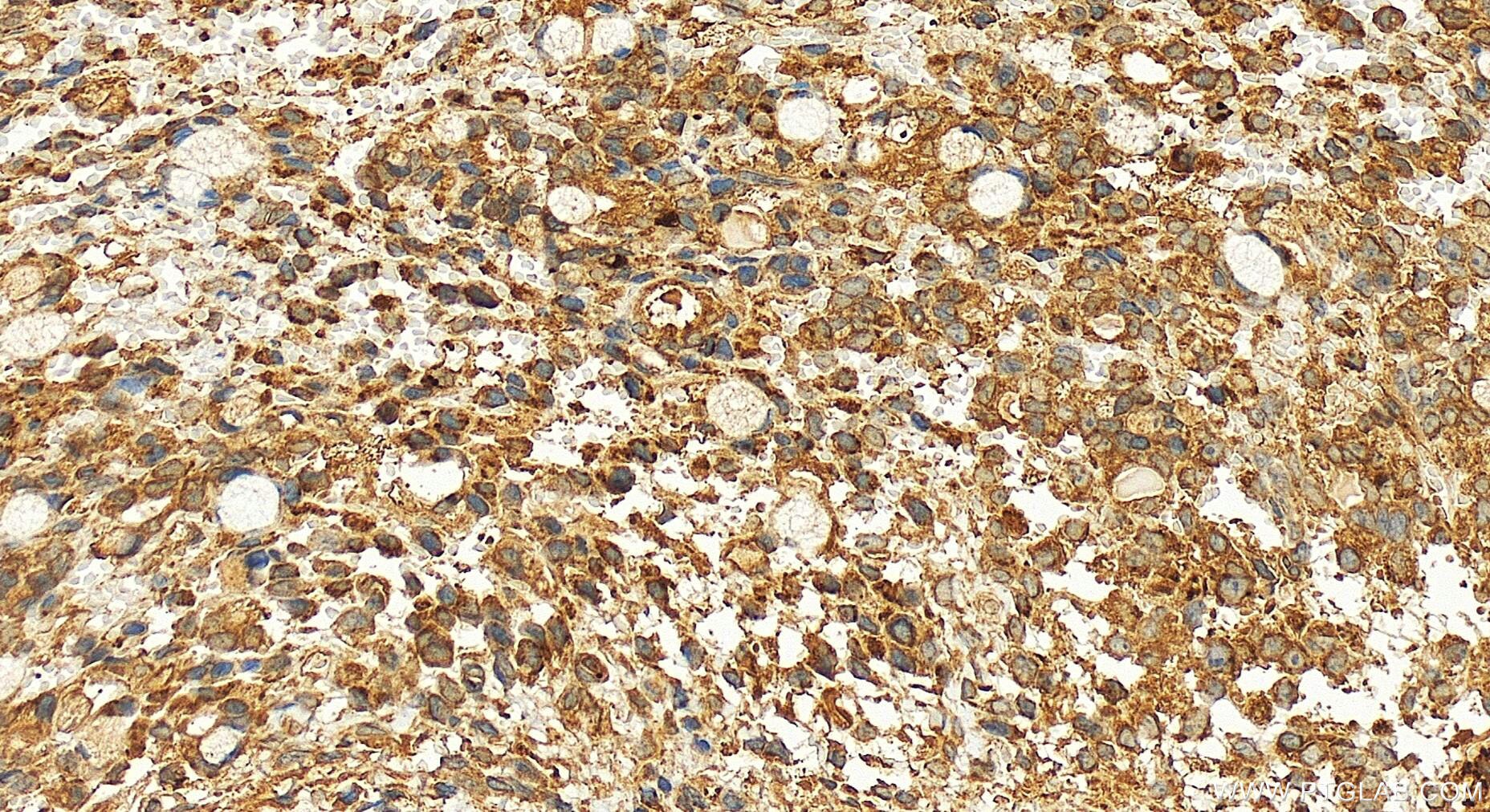Validation Data Gallery
Filter:
Tested Applications
| Positive WB detected in | HEK-293 cells, PC-3 cells, mouse heart tissue, mouse kidney tissue, rat heart tissue, |
| Positive IHC detected in | human ovary cancer tissue Note: suggested antigen retrieval with TE buffer pH 9.0; (*) Alternatively, antigen retrieval may be performed with citrate buffer pH 6.0 |
Recommended dilution
| Application | Dilution |
|---|---|
| Western Blot (WB) | WB : 1:500-1:4000 |
| Immunohistochemistry (IHC) | IHC : 1:50-1:500 |
| It is recommended that this reagent should be titrated in each testing system to obtain optimal results. | |
| Sample-dependent, Check data in validation data gallery. | |
Published Applications
| WB | See 4 publications below |
Product Information
18016-1-AP targets ATPAF1 in WB, IHC, ELISA applications and shows reactivity with human, mouse, rat samples.
| Tested Reactivity | human, mouse, rat |
| Cited Reactivity | human, mouse |
| Host / Isotype | Rabbit / IgG |
| Class | Polyclonal |
| Type | Antibody |
| Immunogen | ATPAF1 fusion protein Ag12557 相同性解析による交差性が予測される生物種 |
| Full Name | ATP synthase mitochondrial F1 complex assembly factor 1 |
| Calculated molecular weight | 328 aa, 36 kDa |
| Observed molecular weight | 31 kDa |
| GenBank accession number | BC071731 |
| Gene Symbol | ATPAF1 |
| Gene ID (NCBI) | 64756 |
| RRID | AB_2243352 |
| Conjugate | Unconjugated |
| Form | Liquid |
| Purification Method | Antigen affinity purification |
| UNIPROT ID | Q5TC12 |
| Storage Buffer | PBS with 0.02% sodium azide and 50% glycerol pH 7.3. |
| Storage Conditions | Store at -20°C. Stable for one year after shipment. Aliquoting is unnecessary for -20oC storage. |
Protocols
| Product Specific Protocols | |
|---|---|
| WB protocol for ATPAF1 antibody 18016-1-AP | Download protocol |
| IHC protocol for ATPAF1 antibody 18016-1-AP | Download protocol |
| Standard Protocols | |
|---|---|
| Click here to view our Standard Protocols |
Publications
| Species | Application | Title |
|---|---|---|
Int J Mol Sci CA9 Silencing Promotes Mitochondrial Biogenesis, Increases Putrescine Toxicity and Decreases Cell Motility to Suppress ccRCC Progression. | ||
Am J Physiol Endocrinol Metab Exogenous H2S reduces acetylation levels of mitochondrial respiratory enzymes via regulating NAD+-SIRT3 pathway in cardiac tissues of db/db mice. | ||
Metabolism FAM3A maintains metabolic homeostasis by interacting with F1-ATP synthase to regulate the activity and assembly of ATP synthase | ||
iScience Deficient tRNA posttranscription modification dysregulated the mitochondrial quality controls and apoptosis |

